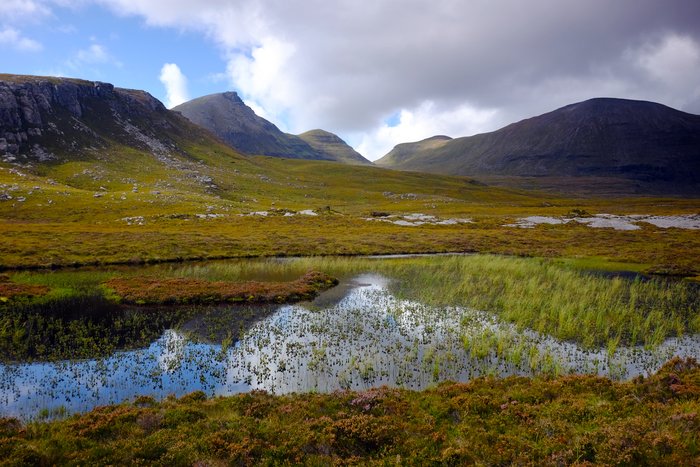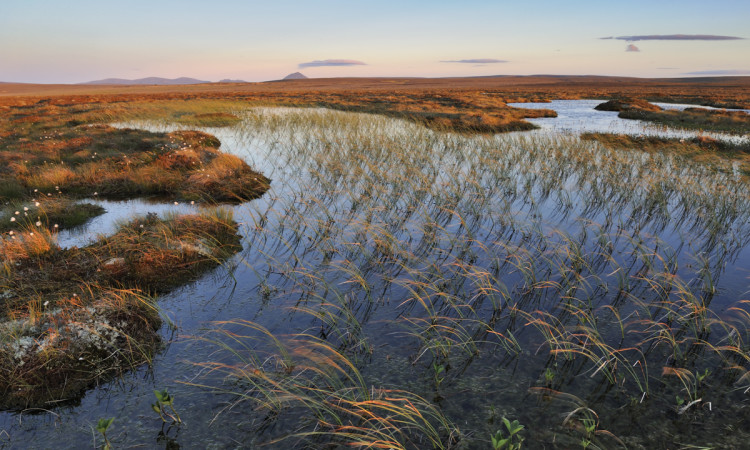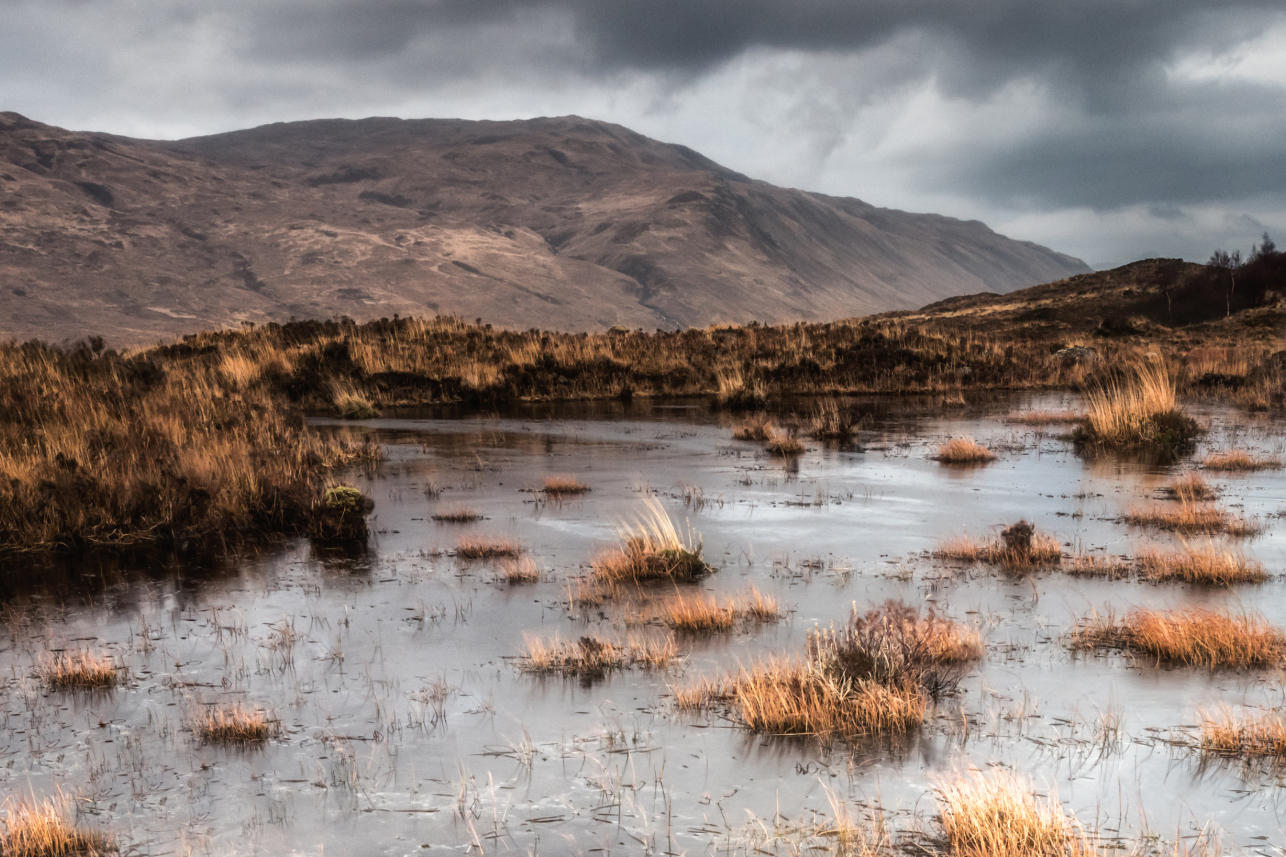Published:
7 Apr 2022
Welcome to the peatlands
Five introductory facts for the uninitiated, and five more things you might not know about bogs and fens

- Peatlands are a type of wetland where the growing vegetation (for example, cottongrass and bog moss in northern hemisphere bogs) dies and partially decomposes in waterlogged conditions to form peat.
- Peatlands are known by many names including bog, moss, marsh, mire, fen and swamp. Each have slightly different characteristics.
- Peatland is a rare habitat that makes up just 3% of the earth’s surface but stores the same amount of carbon as all land-based biomass (organic material) and twice as much as all the world’s forests!
- Peatlands cover 20% of the land in Scotland (around 1.7 million hectares) and store an estimated 1,600 million tonnes of carbon (to put that in context, Scotland’s total greenhouse gas emissions in 2019 were estimated to be 47.8 million tonnes carbon dioxide equivalent). But around 80% of Scotland’s peatlands are degraded and a source of carbon emissions.
- Peatlands are found in 180 countries around the world. Some of the biggest cover large expanses of Russia and Canada but they’re also found in tropical climes such as Northern and Central Congo and Indonesia.
- They’re global. Peatlands are most widespread in Asia (where 38% of the world’s peatlands can be found) followed by North America (32%), Europe (12%) and South America (11%).
- They’re everywhere. Peatland can be naturally forested or naturally open, thrive in lowland or upland locations, on steep slopes and in warm and cold climates. They’re a diverse habitat, which includes bog, fen, marsh, swamp and meadow.
- They support gorillas, elephants and tigers. Populations of western lowland gorilla and forest elephant, listed as critically endangered by the IUCN, live on peatlands in the Congo Basin. The Sumatran tiger lives on peatlands in Indonesia.
- Blanket bogs are not just British. Blanket bogs, common across the west and north of Britain, also form part of the North American tundra and are found as far south as the Cantabrian Mountains in Spain.
- Peat is young coal. Leave peat in the ground for a few million years and it will eventually turn into coal. Isn’t nature mind-blowing?
All about Peatlands
Discover interesting facts about these waterlogged ecosystems in our useful guide
Explore peatlands
